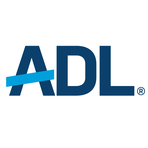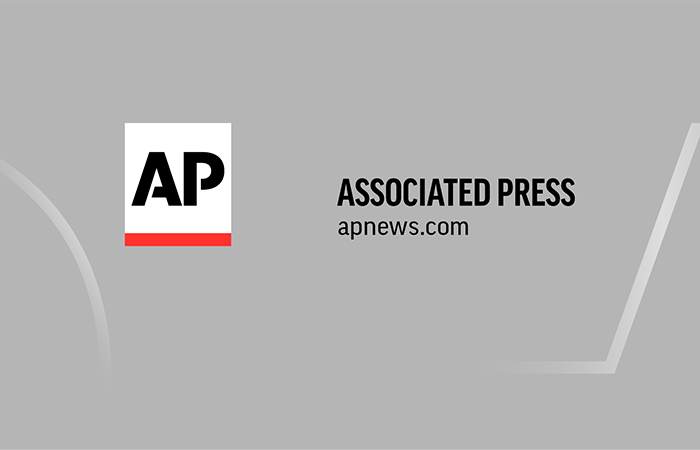The Rising Tide of Antisemitism: A Complex Landscape
April 24, 2025, 5:21 pm
Antisemitism is a shadow that looms large over societies worldwide. It ebbs and flows, sometimes surging with alarming intensity. Recent reports indicate a slight decrease in antisemitic incidents globally since the spike following the October 7 attacks. Yet, the numbers remain higher than pre-war levels. This duality—decline in some areas, persistence in others—paints a complex picture of contemporary antisemitism.
In the United States, the Anti-Defamation League (ADL) has reported a troubling trend. Anger directed at Israel has become a primary catalyst for antisemitic incidents. The ADL's findings reveal that more than half of the reported antisemitic incidents in 2024 were linked to criticisms of Israeli policies. This connection has ignited fierce debates within the Jewish community and beyond. It raises the question: when does criticism of Israel cross the line into antisemitism?
The ADL strives to differentiate between legitimate criticism of Israel and antisemitic rhetoric. However, the gray areas are murky. Vilifying Zionism, for instance, is considered antisemitic by the ADL, yet many Jews oppose Zionism. This paradox creates tension within the community. It’s a tightrope walk, balancing the right to criticize with the need to combat hatred.
The statistics tell a stark story. Antisemitic incidents in the U.S. have surged by 344% over the past five years. Assaults, vandalism, and harassment have become alarmingly common. In 2024 alone, there were 196 assaults, with none resulting in fatalities. Vandalism incidents, particularly those involving swastikas, have become a grim hallmark of this rising tide.
University campuses have emerged as battlegrounds. Jewish students often find themselves in hostile environments. They face exclusion, harassment, and sometimes physical danger. The atmosphere is charged, with tensions boiling over during protests and rallies. The question of safety looms large. Can students wear their identities proudly without fear?
The ADL's report underscores the need for vigilance. Yet, it also highlights a troubling trend: the lack of accountability for perpetrators. Many incidents go unreported. Of those that are reported, a mere fraction result in arrests. In major cities with significant Jewish populations, less than 10% of antisemitic crimes led to arrests between 2021 and 2023. This lack of enforcement sends a chilling message. It suggests that antisemitic acts can occur with impunity.
The report from Tel Aviv University echoes these concerns. It emphasizes the importance of education and legislation. However, without enforcement, these measures are mere words. They lack the power to effect real change. The cycle of hate continues, unchecked and unpunished.
The discourse surrounding antisemitism is further complicated by political dynamics. Some progressive Jewish leaders have criticized the ADL for its stance on pro-Palestinian activism. They argue that the organization has aligned itself too closely with political agendas, undermining its credibility as a civil rights advocate. This internal conflict reveals the fractures within the Jewish community. It highlights the struggle to navigate a landscape where support for Palestinian rights can be perceived as antisemitic.
The complexities of this issue are not lost on leaders within the community. They recognize the need for a nuanced approach. Acknowledging the fears of antisemitism is crucial. Yet, exploiting these fears for political gain threatens the very fabric of democracy. The challenge lies in finding common ground. Can one support Palestinian rights while simultaneously combating antisemitism?
The ADL's findings are a call to action. They urge society to confront the rising tide of hate. The organization emphasizes the importance of protecting civil liberties for all. This includes the rights of those who protest, even when their views clash with mainstream opinions. The fight against antisemitism cannot come at the expense of due process and free speech. Sacrificing these principles undermines the foundation of a diverse society.
As the world grapples with these issues, the Jewish community stands at a crossroads. The rise in antisemitism is a stark reminder of the fragility of tolerance. It calls for vigilance, education, and a commitment to justice. The path forward requires dialogue and understanding. It demands that individuals confront their biases and engage in meaningful conversations.
In conclusion, the landscape of antisemitism is fraught with challenges. The statistics are alarming, yet they tell only part of the story. Behind the numbers are real people—students, families, communities—who feel the weight of hatred. Addressing this issue requires a collective effort. It calls for a commitment to uphold the values of justice and equality for all. Only then can society hope to stem the tide of antisemitism and foster a future where diversity is celebrated, not feared.
In the United States, the Anti-Defamation League (ADL) has reported a troubling trend. Anger directed at Israel has become a primary catalyst for antisemitic incidents. The ADL's findings reveal that more than half of the reported antisemitic incidents in 2024 were linked to criticisms of Israeli policies. This connection has ignited fierce debates within the Jewish community and beyond. It raises the question: when does criticism of Israel cross the line into antisemitism?
The ADL strives to differentiate between legitimate criticism of Israel and antisemitic rhetoric. However, the gray areas are murky. Vilifying Zionism, for instance, is considered antisemitic by the ADL, yet many Jews oppose Zionism. This paradox creates tension within the community. It’s a tightrope walk, balancing the right to criticize with the need to combat hatred.
The statistics tell a stark story. Antisemitic incidents in the U.S. have surged by 344% over the past five years. Assaults, vandalism, and harassment have become alarmingly common. In 2024 alone, there were 196 assaults, with none resulting in fatalities. Vandalism incidents, particularly those involving swastikas, have become a grim hallmark of this rising tide.
University campuses have emerged as battlegrounds. Jewish students often find themselves in hostile environments. They face exclusion, harassment, and sometimes physical danger. The atmosphere is charged, with tensions boiling over during protests and rallies. The question of safety looms large. Can students wear their identities proudly without fear?
The ADL's report underscores the need for vigilance. Yet, it also highlights a troubling trend: the lack of accountability for perpetrators. Many incidents go unreported. Of those that are reported, a mere fraction result in arrests. In major cities with significant Jewish populations, less than 10% of antisemitic crimes led to arrests between 2021 and 2023. This lack of enforcement sends a chilling message. It suggests that antisemitic acts can occur with impunity.
The report from Tel Aviv University echoes these concerns. It emphasizes the importance of education and legislation. However, without enforcement, these measures are mere words. They lack the power to effect real change. The cycle of hate continues, unchecked and unpunished.
The discourse surrounding antisemitism is further complicated by political dynamics. Some progressive Jewish leaders have criticized the ADL for its stance on pro-Palestinian activism. They argue that the organization has aligned itself too closely with political agendas, undermining its credibility as a civil rights advocate. This internal conflict reveals the fractures within the Jewish community. It highlights the struggle to navigate a landscape where support for Palestinian rights can be perceived as antisemitic.
The complexities of this issue are not lost on leaders within the community. They recognize the need for a nuanced approach. Acknowledging the fears of antisemitism is crucial. Yet, exploiting these fears for political gain threatens the very fabric of democracy. The challenge lies in finding common ground. Can one support Palestinian rights while simultaneously combating antisemitism?
The ADL's findings are a call to action. They urge society to confront the rising tide of hate. The organization emphasizes the importance of protecting civil liberties for all. This includes the rights of those who protest, even when their views clash with mainstream opinions. The fight against antisemitism cannot come at the expense of due process and free speech. Sacrificing these principles undermines the foundation of a diverse society.
As the world grapples with these issues, the Jewish community stands at a crossroads. The rise in antisemitism is a stark reminder of the fragility of tolerance. It calls for vigilance, education, and a commitment to justice. The path forward requires dialogue and understanding. It demands that individuals confront their biases and engage in meaningful conversations.
In conclusion, the landscape of antisemitism is fraught with challenges. The statistics are alarming, yet they tell only part of the story. Behind the numbers are real people—students, families, communities—who feel the weight of hatred. Addressing this issue requires a collective effort. It calls for a commitment to uphold the values of justice and equality for all. Only then can society hope to stem the tide of antisemitism and foster a future where diversity is celebrated, not feared.

